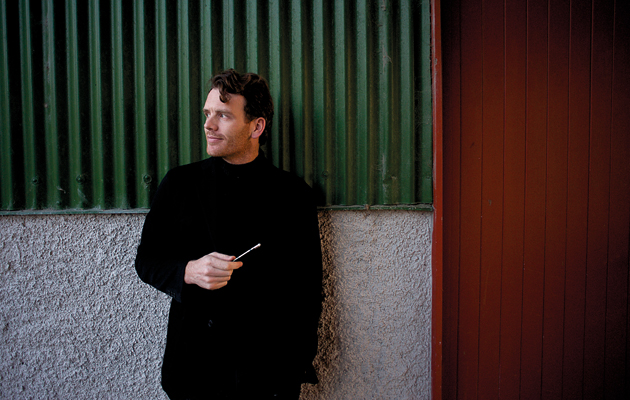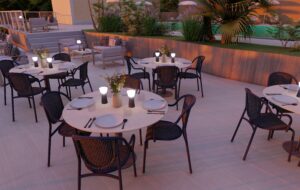|
|
||
|
Irish Design 2015 was set up to promote the country’s craft and design, creating jobs and demand for exports – but its lasting legacy might mean much more for the country than economics Ireland is a country with a complex: a Peripheral Island Complex. A psyche of humility (if not inferiority) is seemingly pervasive; the Irish have a hard time self-promoting, sports fandom aside. This is, after all, a country that never experienced the Industrial Revolution. And so Ireland’s “brand” is largely that of a time gone by: pastoral and pure, of craftsmen and fishermen, of James Joyce and Oscar Wilde (and maybe Sinéad O’Connor). With its Celtic Tiger economic miracle from the mid-1990s to mid-2000s firmly quashed by the latest recession, the exception to economic pessimism is its strong foothold in tech, animation and film. To be ambitious in Ireland – or, rather, for Ireland – can be a challenge. And so one might easily have been a sceptic of Irish Design 2015, a government-backed initiative convened by the Design & Crafts Council of Ireland (DCCoI) to promote Irish design both within the country and around the world. In part because the first question most people ask is: “Ireland does design?”
Karen Hennessey, chief executive of DCCoI and ID2015, in her office in Dublin The initiative is an outcome of the 2013 edition of the biennial Global Irish Economic Forum, where around 300 business and cultural figures from Ireland or linked to Ireland (the “Irish global family”) met to discuss opportunities for the country. Irish Design 2015 was born and clear objectives for success were set – tellingly, ID2015 was placed under the watch of the Department of Jobs, Enterprise and Innovation (and not Culture, which is oddly bundled in the same ministry as Drugs Strategy). It would be a PR push, but one that had to create 1,800 jobs over three years, 200 new start-ups, pull in €10 million in exports, and facilitate 300 companies showing their wares at international design trade fairs – across fashion, architecture, animation, industrial design and craft. The year is now wrapping up, so how has Irish Design 2015 impacted Irish design? By all numerical measures, it has been a success – all targets will have been met or exceeded by 2016. But, even by the admission of business and employment minister Ged Nash, that’s not the only story worth telling – or even the most impactful. “We had a problem with the fragmentation of the design industry in Ireland; now we’ve created networks of people who are willing to work together and are out of their silos,” he says. “It’s not just important to our economy, but to our society, to our sense of ourselves and our unique identity.” He adds: “If there was a value in the Irish year of design, it’s convinced government of the necessity to really embed the principles of design and design policy in everything we do.” |
Words David Michon
Photography Paulo Nunes dos Santos
Above: Enignum chair by Joseph Walsh |
|
|
||
|
Designer Joseph Walsh |
||
|
This was not Ireland’s first attempt at promoting its design sector, however. In 1961, the Irish export board, the Córas Tráchtála Teoranta, invited a selection of Nordic designers (three Danes, a Finn and a Swede) to tour and evaluate the design scene on the island. Their report, dubbed the Scandinavian Report, was – in places – scathing. Of some work, it wrote it had “not the slightest chance of competing successfully on the world market”. From this, the Kilkenny Design Workshops was born. Running from 1965 to 1988, and housed in the former Ormonde Stables in the heart of the city (now home to the DCCoI and the National Craft Gallery), its task was to build up the skills of the design industry. But its legacy is one of unfinished business. In the 1960s, Ireland had looked to Scandinavia, where “the scale of their industry, their raw materials, the patterns of their society” were judged to be similar (according to the Scandinavian Report’s introduction). Just as then, the Scandinavian region continues to excel – and Ireland has once again been left in the proverbial dust. |
||
|
Ormonde Stables, home to the DCCoI and the National Craft Gallery |
||
|
The strong common aesthetic thread within Nordic design makes its brand an internationally strong one. In 2015, Ireland still lacks this – so, how can you travel the world promoting “Irish design” when such a thing doesn’t seem to exist in a coherent fashion? That, for the duo behind industrial design studio Notion (who ID2015 brought to Salone del Mobile in 2015), is an opportunity. “You can’t do anything wrong,” says Notion’s co-founder, Ian Walton. “There’s a freedom where there isn’t a specific aesthetic.”
Headphones at Notion studio For them, is their work in any way “Irish”, being designed and made there? Not consciously: “It’s kind of caught us off guard, how much that’s become part of the story.” There’s no question ID2015 is a flag-waving exercise, but without an established design scene, what makes Irish design “Irish”? Alex Milton, programme director of ID2015, suggests that a history strong with theatre and literature isn’t divorced from the traditions of making and craft: “In Ireland, the one bit that maybe pulls it all together is the sense of storytelling and narrative.” |
||
|
Ian Walton and Marcel Twohig of Notion design studio |
||
|
It’s certainly something that Icon heard from designers as diverse as big-hitting industrial design practice Design Partners to the countryside furniture studio of Joseph Walsh. It’s found in a way of working: a justification of design work that’s not a one-liner, but something more reflective and with a sense of empathy. This definition of “Irishness” remains difficult to grasp, yet what ID2015 has really highlighted is the value of Ireland’s strong heritage of thoughtful craftsmanship, but it’s done so while recognising that this needs to be redefined and refined. Waterford Crystal, for instance, remains one of the country’s most recognised brands – yet, today, almost none of Waterford’s production is done in Ireland. And though many of its craftsmen are nearing or at retirement age, the DCCoI would like to take advantage of this heritage to keep up the region’s global reputation by establishing a Centre of Excellence. In fact, across the board, education has been a key topic for ID2015: promoting apprenticeship programmes in various crafts and even integrating design into school curricula – hoping not only to spawn the next generation of makers, but also reinforce the value of good design in the next generation of consumers. |
||
|
The History Chair by Cathal Loughnane, creative director of Design Partners, and Peter Sheehan, on display at the Design Partners HQ |
||
|
One brand, J Hill’s Standard (which launched at Salone del Mobile in 2014) was already doing some work to keep crystal-cutting alive, and doing so in a way that connects it to the design-savvy consumers of today by collaborating with Martino Gamper and Scholten & Baijings. But, says J Hill’s founder Anike Tyrrell, “It’s baby steps.” “The goal,” she says, “is to re-establish the community.” And, though she points to a number of young students of glass at Dublin’s National College of Art and Design, Tyrrell says of her own project: “You have to start with something people want to buy.” That will build a reputation, and, should the brand be a success, it could provide inspiration for others to start up their own. It’s been a primary function of ID2015 to facilitate the building of Irish brands’ reputations in Ireland and abroad.
Eamonn Terry, who cuts crystal for J Hill’s Standard just outside Waterford Another of ID2015’s positive outcomes was perhaps not intended. Within the Design and Crafts Council of Ireland, there is now a deep-seated desire to do more. Karen Hennessy is both the chief executive of DCCoI and ID2015, and says, unequivocally: “We’ve changed … we can’t go back to what we were.” Having consistently exceeded expectations with only a small team, little time and a limited budget, the DCCoI has the taste of global success – and it doesn’t plan to give it up. |
||
|
Ireland’s scenic landscape |
||




























